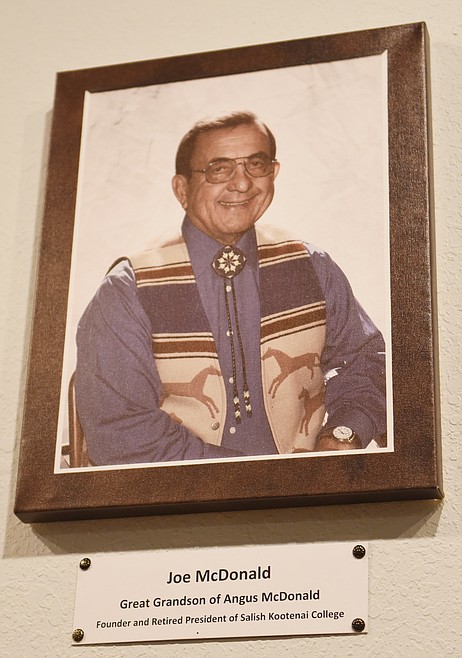Ninepipes Museum of Early Montana reopening for season
A museum is “worth it’s weight in gold” if it features items you just don’t see in other museums, and one that is a thrill to visit for all members of the family.
Nipepipes Museum of Early Montana has been closed for the season since Oct. 31, 2018, and re-opens on Friday, March 1. The museum is located at 69316 U.S. Highway 93, about five miles east of Charlo.
Bud Cheff Jr. built the museum from the ground up, starting the project in 1996 and finishing it in the spring of 1997. The building is 80 feet wide and just more than 40 feet deep.
“Bud designed the entire building,” said his wife of nearly 59 years, Laurel, his partner in projects during their six decades together. While their daughter Jo was growing up, she was involved with some of dad’s endeavors as well. She had been the museum director for about a year, taking over when Bud “retired.” Not really, he helps with special events at Ninepipes, and has a wealth of information to share about musum exhibits. His memory is impeccable.
The pine trees stand up to about 35 feet tall in the middle of the museum gift shop. The interior logs are made of tamarack wood.
Bud enlisted John Lapka of Lincoln, Mont., to build the Nipepipes Museum structure. He built High Country Meats in Lincoln.
“We liked the logs so much we asked him to build this,” Laurel said.
The museum proper has concrete walls that are 8 to 10 inches thick, and are well insulated.
The building essentially has weatherproof and fire retardant properties.
By the way, those pine trees come from the Cheff Ranch on Mollman Pass Trail just a stone’s throw from the museum.
“It was my granddad’s place. My son and grandson run it now,” Bud said.
“WE HAVE a lot of local craft people who bring their stuff in,” Jo said.
Those crafts are displayed in the gift shop and art gallery, which covers about 3,000 square feet of the interior.
Jo spoke about the number of countries represented by visitors of the Ninepipes Museum.
“We get a lot of them, from the U.S. and Canada,” Bud said, and from 30 to 40 foreign countries, according to Jo. They include Spain, Germany, China, New Zealand and Australia, and from South America.
Last year, they had three tour groups from Tazmania.
“A lot of people like out photo gallery, and the kids like our wildlife diarama,” Jo said, and that includes the room with a wildlife mount “village” and tipi camp.
Jo said Ninepipes is a member of a consortium that includes museums in Lake County.
NINEPIPES MUSEUM was named for Bitterroot Salish Chief Ninepipes (Joseph Ninepipes). He passed away in 1871.
Two years ago, the Cheffs initiated an audio tour in the museum. It was arranged by talented David King of Polson, who was instrumental in the Flathead Lake International Cinemafest in late January in Polson.
“He’s a great guy to work with,” Jo said.
Joe McDonald of Ronan talks about his family and the Hudson Bay Co. It was located just south of Ninepipes Museum.
“It was one of the last Hudson Bay outposts in the U.S. to close,” Jo said. That occurrd in the late-1880s.
BUD TOLD an interesting story about an artifact that made its way to the Ninepipes Museum.
He and his sister Viola were explosing in the Mission Valley one day more than 20 years ago. Viola found an antique “war club” in a cave.
Bud took possession of it, but it burned in a house fire. For reasons unknown, Laurel said that was when Bud had thoughts of building a museum to display western Montana artifacts.
THE MUSEUM has accepted many donations of artifacts. Notable donors include Jim Edwards and his wife Helen. They donated a 150-year-old pipe that had belonged to Joseph Ninepipes.
Keep your eye open for the announcement of the unveiling of a special exhibit this spring. It is the Hugh Magnussen Ivory Collection, and includes 150 pieces of carved ivory and other art items.
“I turned it over to Jo completely to run it. I’m her helper,” Bud said.
Kathy Senkler is the marketing director and assistant museum director.
The Cheffs do not own the museum itself. It is managed by a board of directors.
Everyone is invited to visit Ninepipes Museum of Early Montana from 9 a.m. to 5 p.m. Monday through Saturday.
If you would like to be a museum member or make a donation to the non-profit museum, contact Jo at 406-644-3435.







